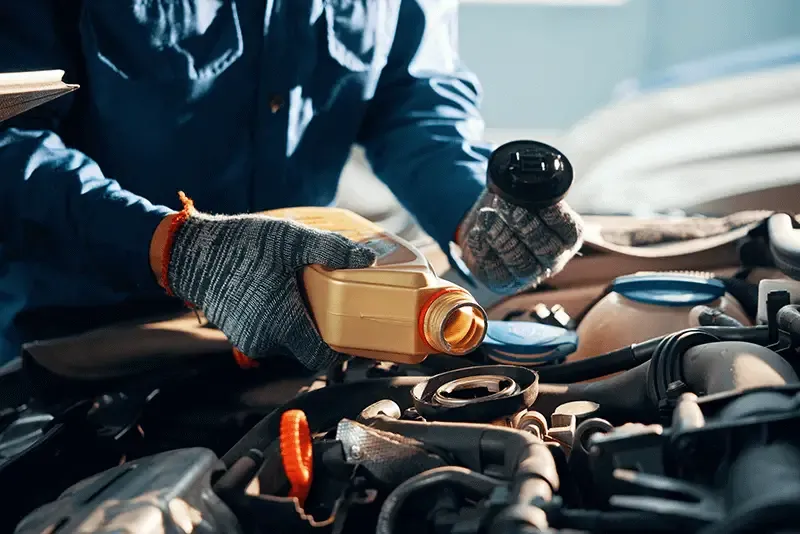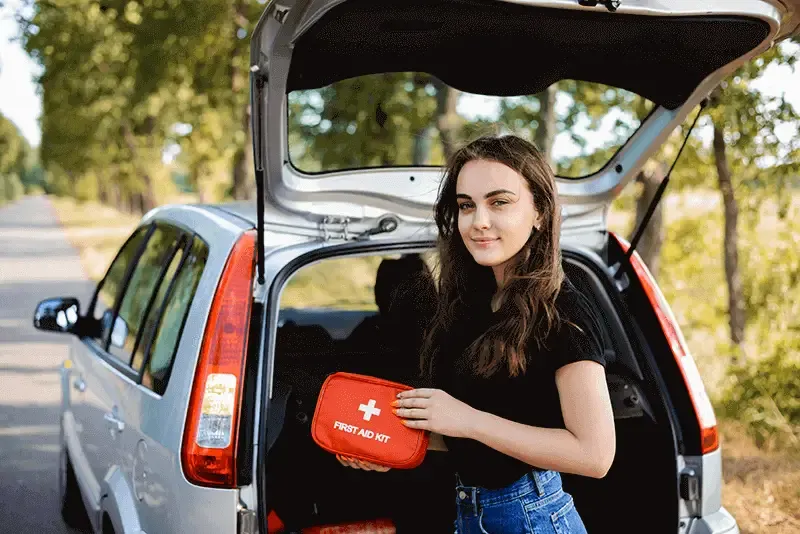How to prepare your car for winter in eight steps
By MAS Team | 23 June 2021
Updated 31 May 2023
Whether you're heading to the slopes or just commuting in cold weather, winter conditions can be hard on our cars. Doing a little work now to prepare your car for winter can help you avoid expensive repairs and will make sure you get to your destination safely.
If you know your way around a car, the onset of winter is the time to make sure it's ready for low temperatures.
Check your antifreeze concentration is up to scratch in case you encounter temperatures below zero. You should also check your oil and consider replacing your brake fluid, which can degrade in the cold.
If this all sounds a little beyond your expertise, leave it to the professionals and take your car in for a service.

Colder temperatures can put more strain on your car battery. If you’ve noticed yours is labouring when you start the engine, you’ve experienced a flat battery recently, or you think it’s just not as reliable as it could be – get it tested, check for corrosion, and replace if necessary.
If you're comfortable using them, it's a good idea to keep a set of jumper cables or an external jump starter in your boot – this could help get you, or someone else, out of a tough situation.
Head to your local service station to check your tyre pressure. You can usually find details on your vehicle’s optimum tyre pressure on a sticker inside the driver’s door or fuel cap, or in the instruction manual. It’s best to check pressure when tyres are cold, rather than straight after you’ve driven long distances.
While you are checking your tyre pressure, it’s a good time to take a look at your tyre tread. New Zealand law states it needs to be at least 1.5mm deep, but anything below 3mm means your tyre grip in wet conditions is likely to be significantly reduced. The tread on new tyres is around 8mm.
If you've got a spare tyre, make sure it's properly inflated too.
Added exposure to the elements and extra mud on the road means keeping your windscreen clean and protected is especially important in winter. Give your wiper blades a clean with hot soapy water or alcohol wipes, and spray wiper arms with lubricant if there’s a pesky squeak.
Next, add a good quality windscreen wash fluid to the water reservoir under the hood – this makes a big difference when it comes to keeping your windscreen clean while on the go.
On frosty mornings, leave your demister on for a few minutes before setting off, to ensure you have enough visibility through all windows before you hit the road.
With shorter days and darker mornings, those headlights and tail lights you might not have given a second thought about in the summer months are now more important than ever. To ensure you have the best visibility, and can be seen by other road users, walk around your car and check all lights are working properly. While you’re at it, check your hazard lights too.
As headlights and tail lights are a magnet for dirt and grime, give them a thorough wipe down with a damp cloth.
A well-stocked car emergency kit isn’t just a bundle of tools in the far reaches of the boot, it’s also about having the right gear on hand to stay safe should you need to wait for assistance. If you were to break down or have an accident in a remote spot or in snowy conditions, help might take some time to arrive, so it always pays to be prepared.
When putting together an emergency kit for your car, start with a basic tool kit that includes a screwdriver, pliers, a wrench and jumper leads. Even if you’re not too handy with tools yourself, these could prove useful if someone with mechanical nous were to help you with a breakdown.
Other essentials to add include:
It’s also important – especially in winter – to stock your car emergency kit with everything you need to be warm and safe if you have to stay put for a while, so keep a blanket, warm clothes, bottled water and some long-life food in there too.
If you’re driving in alpine areas, you should also throw in a small shovel and a bag of something abrasive, like sand – both can be useful if you find yourself easing stuck tyres out of snow. And of course, a set of chains is a must if you’re headed to the mountains.
If it all sounds too complex, a range of auto supply shops sell pre-made kits, which you can then top up with any extras.

With wintry weather serving up everything from fog to frost, the most important thing you can do to keep safe behind the wheel is to drive to the conditions. Before you set out on your trip, check ahead with NZTA advisories on road conditions and closures, and plan your journeys to take longer.
Try these top tips for safer winter driving:
If you're taking your car on a winter road trip, make sure you've got the right level of insurance cover for all eventualities. For example, if you'll be sharing the driving, check that your policy includes whoever your other drivers will be – in some cases, you'll need to add them onto your policy as a named driver, or your policy might exclude drivers under a certain age.
If you have comprehensive vehicle insurance with MAS, we can help you get back on track if you do have an accident. We'll pay up to $1,000 towards any necessary and reasonable accommodation and travel expenses that are incurred to complete your journey as a result of a loss to your vehicle.
Check that your car insurance is up to speed this winter. Find out more about MAS's car insurance policies, including the different types of cover available. There are some simple things you can do to prepare your home for winter, too.

14 February 2024
It's no secret that as we age our health may decline, which can take a toll on our overall well-being. Learn how to look after it with the power of social participation.

30 September 2019
Taha hinengaro, your mental and emotional wellbeing, needs to be taken care of. It's about how you feel, communicate and think.

10 April 2019
Childhood food allergies are increasing in numbers and complexity across the globe, including in New Zealand, and there’s not one clear cause.